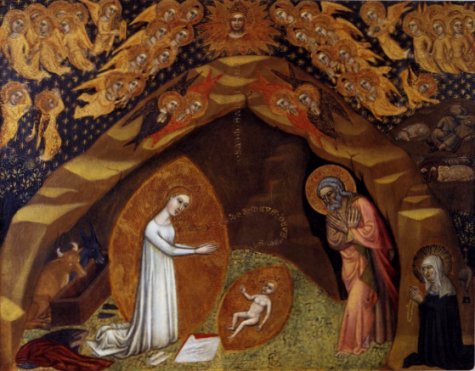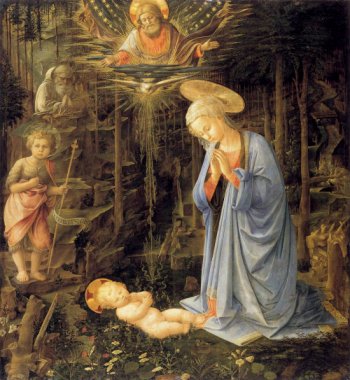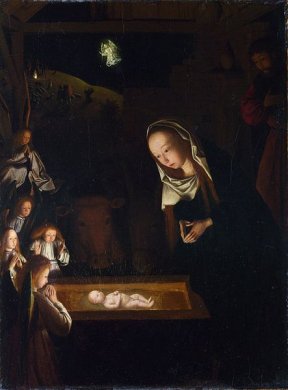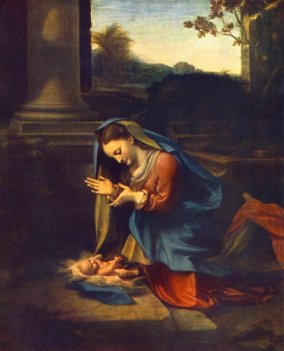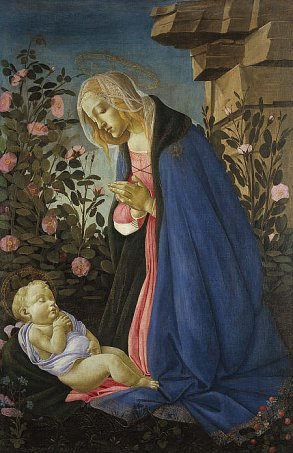|
St.
Bridget of Sweden (1303 - 1373) had a vision of the Nativity. This has had
a powerful influence on art, though in general it took a long time coming.
When I was present by the manger of the Lord
in Bethlehem . . . I beheld a virgin of extreme beauty. . . . well wrapped
in a white mantle and a delicate tunic, through which I clearly perceived
her virgin body. . . . With her was an old man of great honesty, and they
brought with them an ox and an ass. These entered the cave, and the man,
after having tied them to the manger, went outside and brought to the
virgin a burning candle; having attached this to the wall he went outside,
so that he might not be present at the birth. Then the virgin pulled off
the shoes from her feet, drew off the white mantle, that enveloped her,
removed the veil from her head, laying it by her side, thus remaining in
her tunic alone with her beautiful golden hair falling loosely down her
shoulders. Then she produced two small linen cloths and two woollen ones,
of exquisite purity and fineness, that she had brought, in which to wrap
up the child who was to be born; and two other small articles with which
to cover and bind his head, and these she put down beside her in order to
use them in due time. . . . And when all was thus prepared, the virgin
knelt down with great veneration in an attitude of prayer, and her back
was turned to the manger, but her face was lifted to heaven, towards the
east. Thus with her hands extended and her eyes fixed on the sky she was
standing as in ecstasy, lost in contemplation, in a rapture of divine
sweetness. And while she was standing thus in prayer, I saw the child in
her womb move and suddenly in a moment she gave birth to her son, from
whom radiated such an ineffable light and splendour, that the sun was not
comparable to it, nor did the candle, that St Joseph had put there, give
any light at all, the divine light totally annihilating the material light
of the candle, and so sudden and instantaneous was this way of bringing
forth, that I could neither discover nor discern how, or by means of which
member, she gave birth. Verily though, all of a sudden, I saw the glorious
infant lying on the ground naked and shining. His body was pure from any
kind of soil and impurity. Then I heard also the singing of the angels,
which was of miraculous sweetness and great beauty. . . . When therefore
the virgin felt, that she had already borne her child, she immediately
worshipped him, her head bent down and her hands clasped, with great
honour and reverence and said unto him, Be welcome my God, my Lord and my
Son. . . . When this was done, the old man entered and prostrating himself
to the floor, he wept for joy.
As early as the 1370s, soon after
Bridget's death in Rome, Niccolo di Tommaso painted St Bridget's
Vision of the Nativity; there are at least two versions of this image by
this artist. Then the idea faded away for a hundred years or so,
until artists such as Lippi and Botticelli took it up again.
In some
paintings, such as those by Geertgen tot Sint
Jans and
Correggio, there is to my eyes a suggestion of an altar.
|
